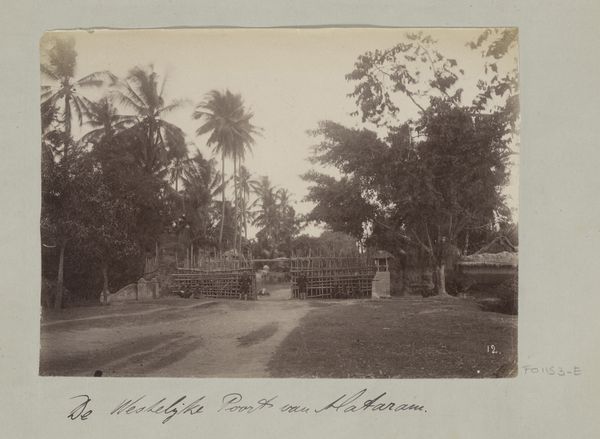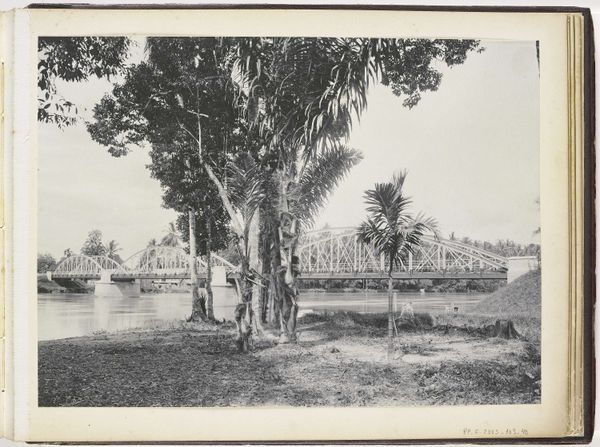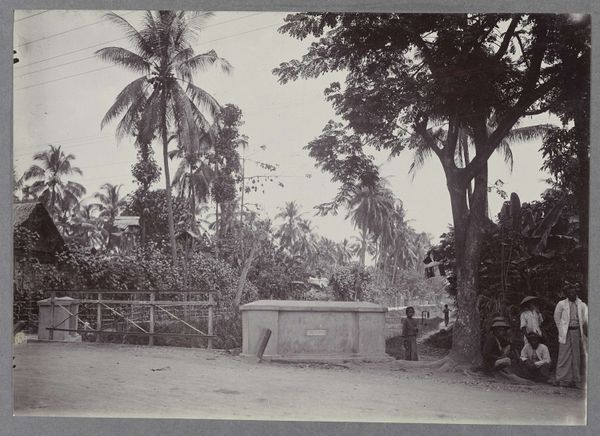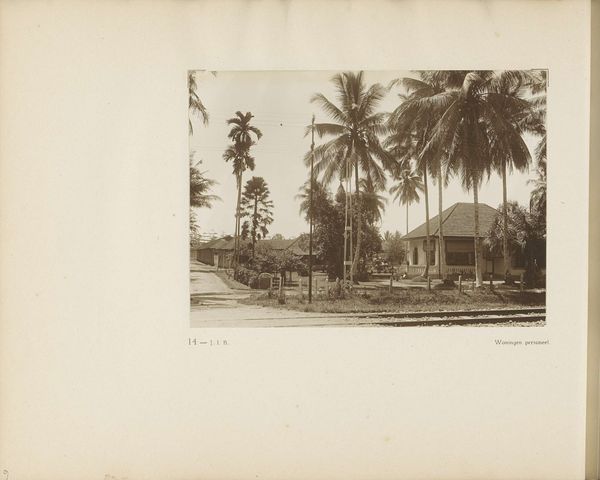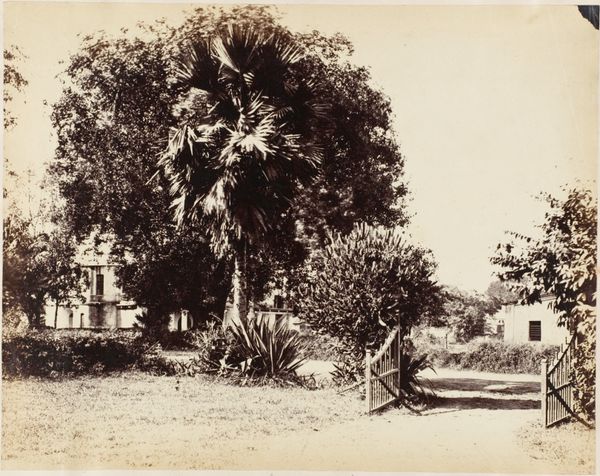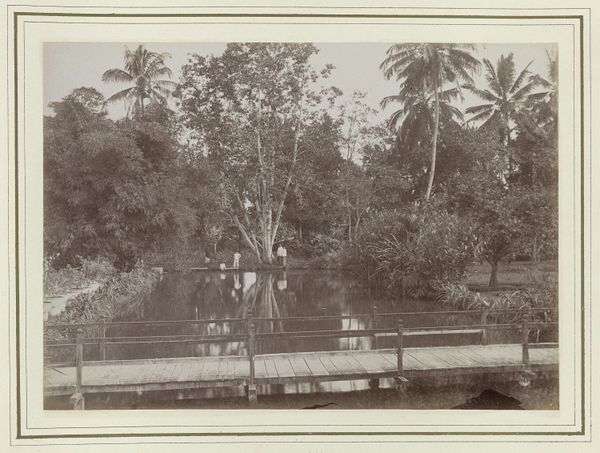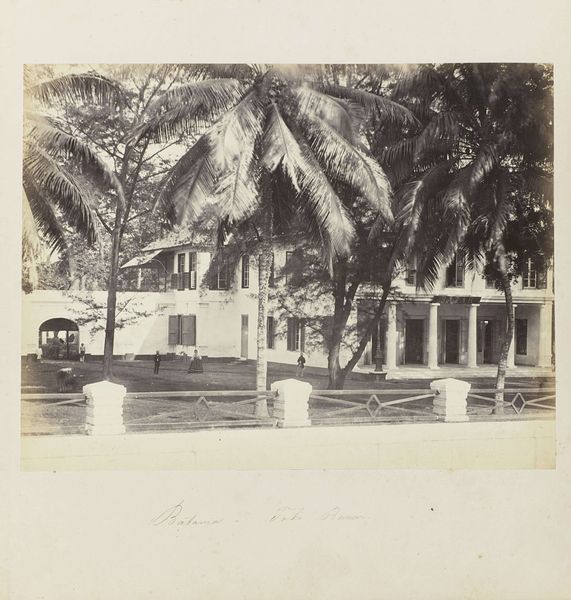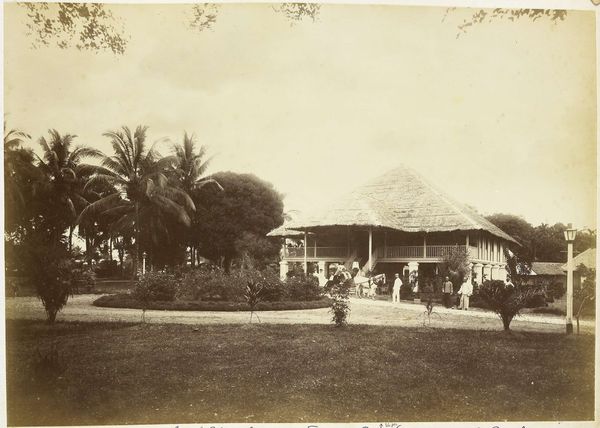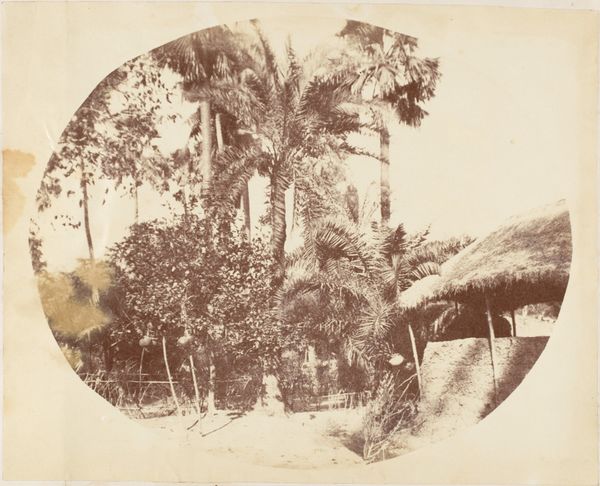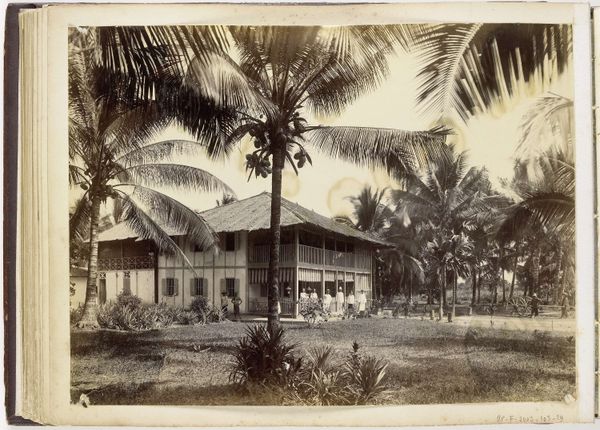
photography
#
landscape
#
photography
#
realism
Dimensions: height 150 mm, width 210 mm
Copyright: Rijks Museum: Open Domain
Curator: Looking at this 1886 photograph titled "Woonhuis," by Kassian Céphas, the thing that strikes me is how it presents a hidden world. The house itself is almost obscured by dense foliage. Editor: Yes, there is definitely an atmosphere of concealment! It gives off a very quiet, almost guarded feeling, wouldn’t you agree? There's such controlled composition, you immediately sense an element of careful protection, if not secrecy. What symbolic weight might this hidden architecture hold? Curator: Indeed! Perhaps that's because, within Southeast Asian visual culture, homes traditionally function as micro-cosmoses. We often see the blending of nature and dwellings, suggesting an interconnection between domestic life and spiritual elements—in a harmonious relationship. Think about ancestral connections and nature worship reflected in visual architecture. The overgrowth might signal a powerful, symbiotic connection to ancestors. Editor: I see what you mean, but for me the density around the building prompts a discussion about the complicated histories surrounding photography, colonialism and representation. Images like these circulated during colonial times, offering an insight into a lifestyle inaccessible to the indigenous population. Does the photograph operate, therefore, as an emblem of privilege? It's important to acknowledge who this space serves and the power dynamics it represents. Curator: That's a sharp perspective. Thinking about it further, the image invites the viewer to project meaning onto the scene. It makes you consider the interplay of interiority and exteriority, which extends from physical space into the realm of culture. You could go as far to wonder about its psychological dimension: does it invite us into a private mental landscape? Editor: I agree there's much here to unpack regarding public versus private, accessibility and control of resources. We are, in essence, looking at a highly constructed perspective, where not everything is exposed. It begs us to inquire: what exactly are we not seeing, and why? Curator: Exactly! It’s about navigating beyond the apparent simplicity. What a perfect piece to consider the ways in which symbolic imagery intertwines with social history. Editor: Agreed! I now see so many layered contexts embedded within what appeared as a tranquil residential photograph.
Comments
No comments
Be the first to comment and join the conversation on the ultimate creative platform.
